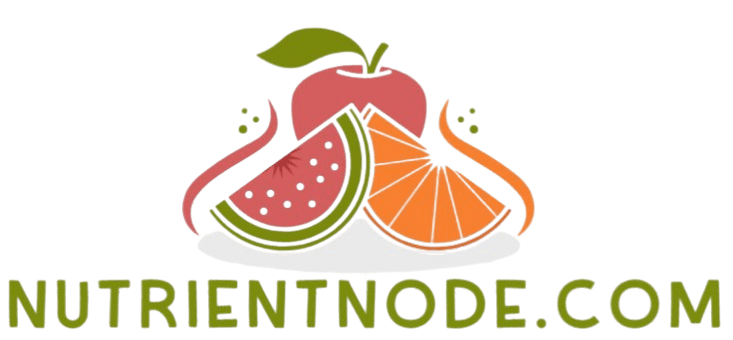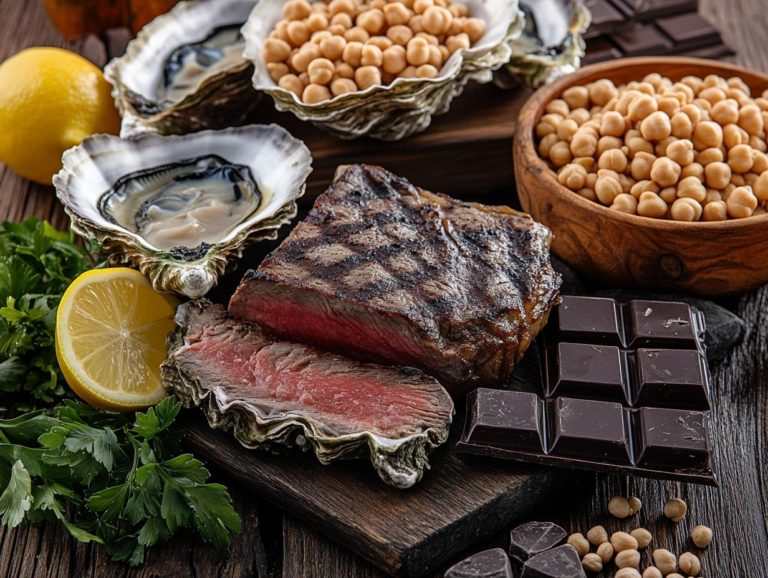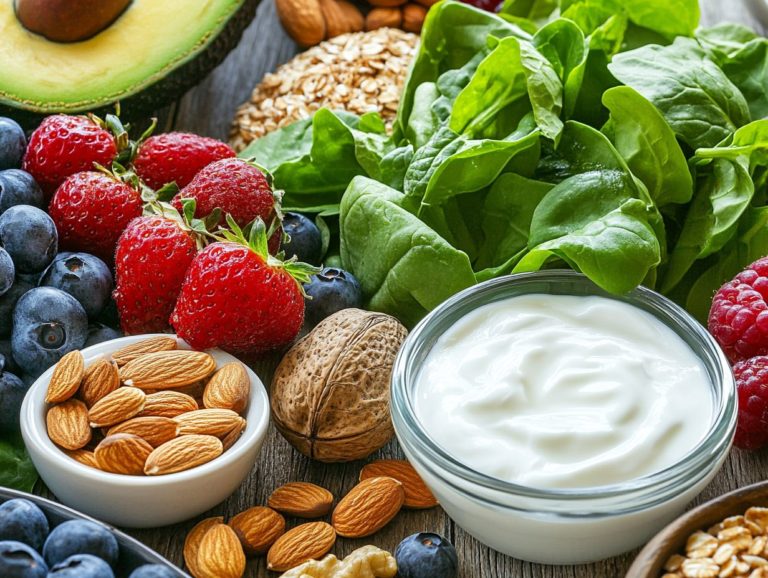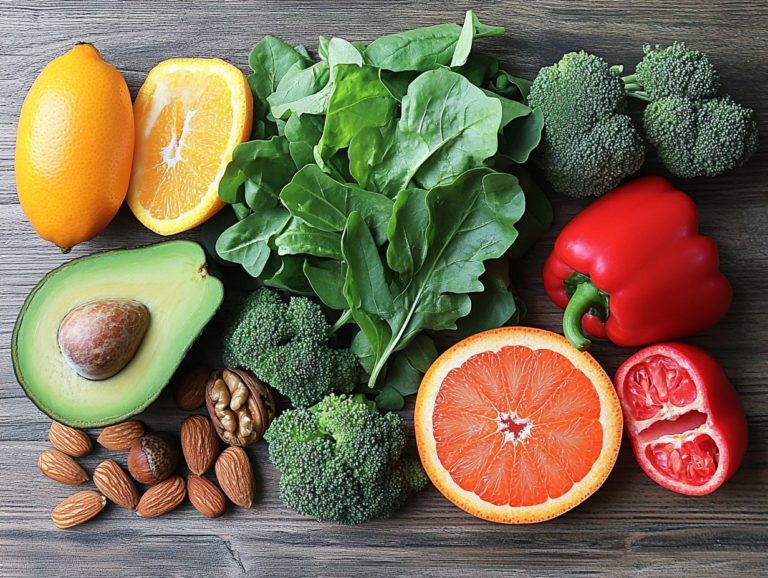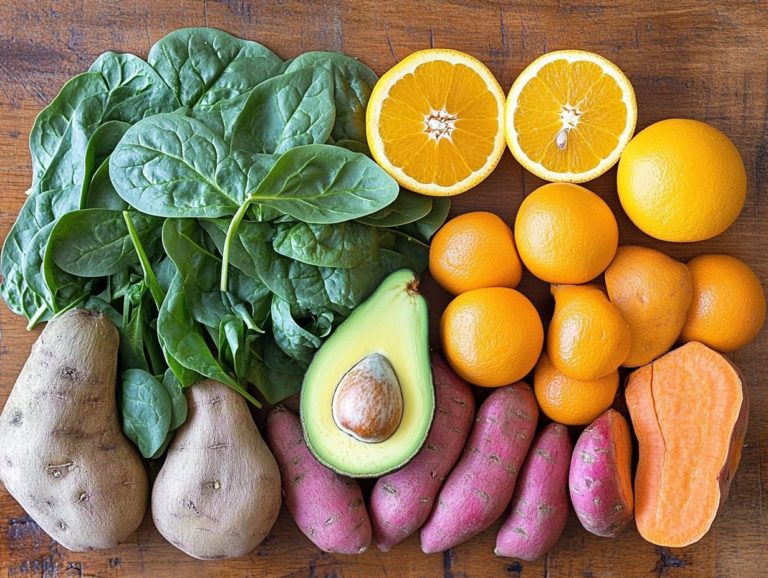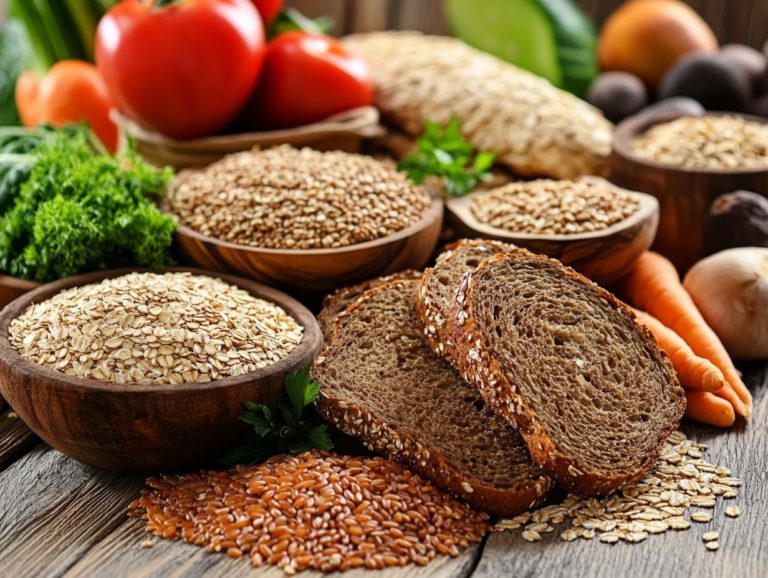5 Fruits High in Fiber You Should Eat
Looking to elevate your fiber intake without compromising on flavor? You ve come to the perfect spot!
This article showcases five exquisite fruits that are high in fiber and packed with essential nutrients. Discover why fiber is essential for your health!
Uncover simple ways to incorporate these fruits into your meals. Get ready to embark on a journey toward a healthier, more satisfying diet!
Contents
- Key Takeaways:
- 1. Avocado
- 2. Raspberries
- 3. Blackberries
- 4. Pears
- 5. Apples
- What Is Fiber and Why Is It Important?
- Frequently Asked Questions
- What are the benefits of eating 5 fruits high in fiber?
- Which fruits are considered high in fiber?
- How much fiber do these fruits contain?
- How can I incorporate these fruits into my diet?
- Can I still eat these fruits if I am trying to lose weight?
- Are there any other sources of fiber I should include in my diet?
Key Takeaways:
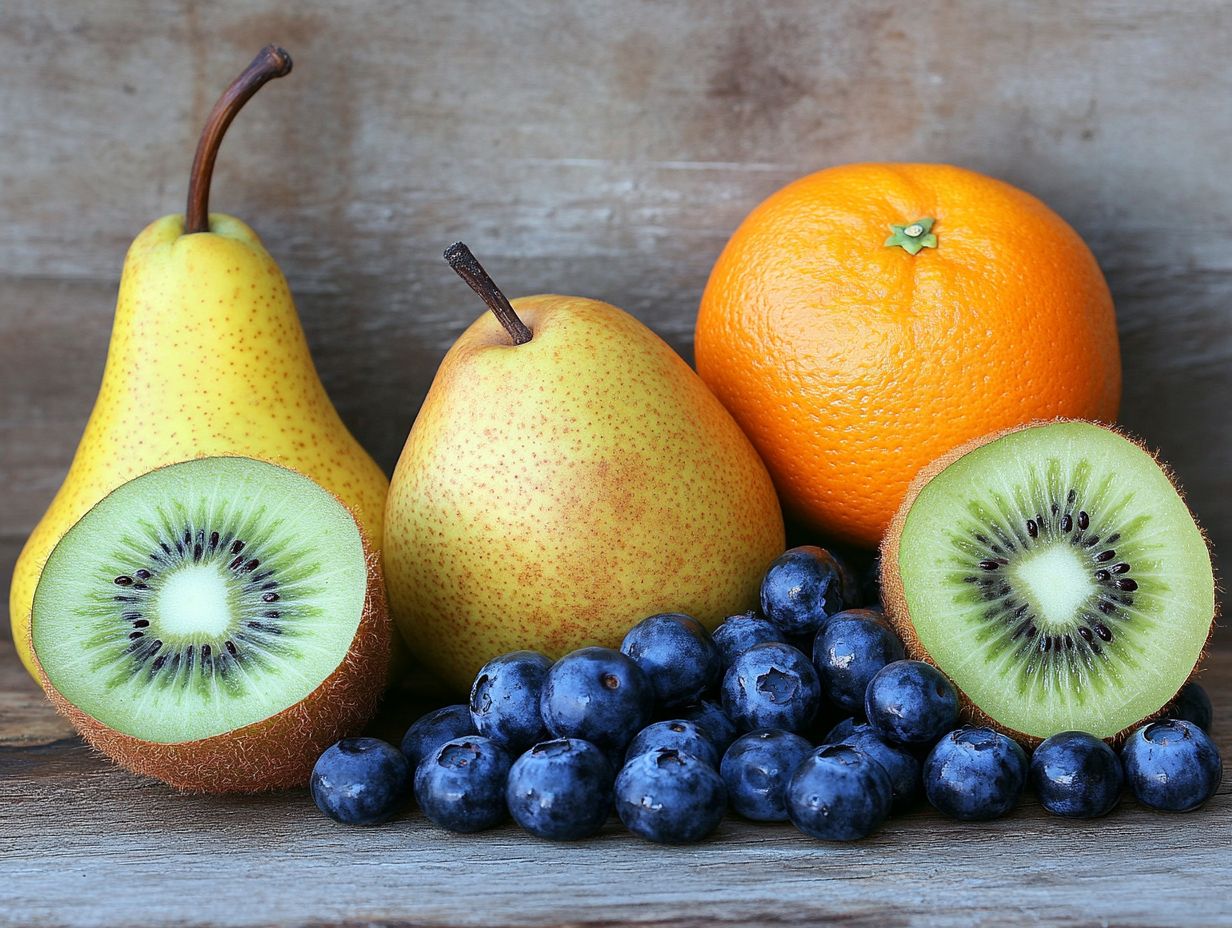
Avocado, raspberries, blackberries, pears, and apples are all high in fiber. Fiber keeps your digestion happy and can help fight diseases like heart disease and diabetes!
Try adding strawberries, bananas, and oranges to your smoothies or as toppings on oatmeal for a tasty fiber boost!
1. Avocado
Avocados are not just tasty food; they’re a healthy choice! Packed with healthy fats, fiber, and vitamins, they re great for your digestive health.
One medium avocado has about 10 grams of fiber. This helps keep your digestion running smoothly and can make you feel full, helping with weight management.
Avocados are rich in heart-healthy fats. This makes them a great choice for your heart health!
Incorporating avocados into your meals is easy. Blend them into smoothies, spread them on toast for breakfast, or toss them in salads for a nutritious boost.
2. Raspberries
Raspberries are bright red and burst with flavor. They are also packed with fiber, making them a fantastic choice for boosting your intake.
These berries help prevent constipation and support a healthy gut. Their low calories and high fiber keep you feeling full longer.
Packed with antioxidants, raspberries combat oxidative stress. Enjoy them as a snack, or mix them into smoothies, yogurt, or salads!
They re also great in baked goods or as toppings for oatmeal, easily fitting into your daily diet.
3. Blackberries
Blackberries are delicious and full of nutrients. Their impressive fiber content can help boost your overall health.
These berries support gut health, which is vital for wellness. Toss blackberries into smoothies, oatmeal, or yogurt for easy and tasty meals!
They re delightful in salads or blended into sauces for added flavor. Pair fresh blackberries with nuts or cheese for a satisfying snack!
4. Pears
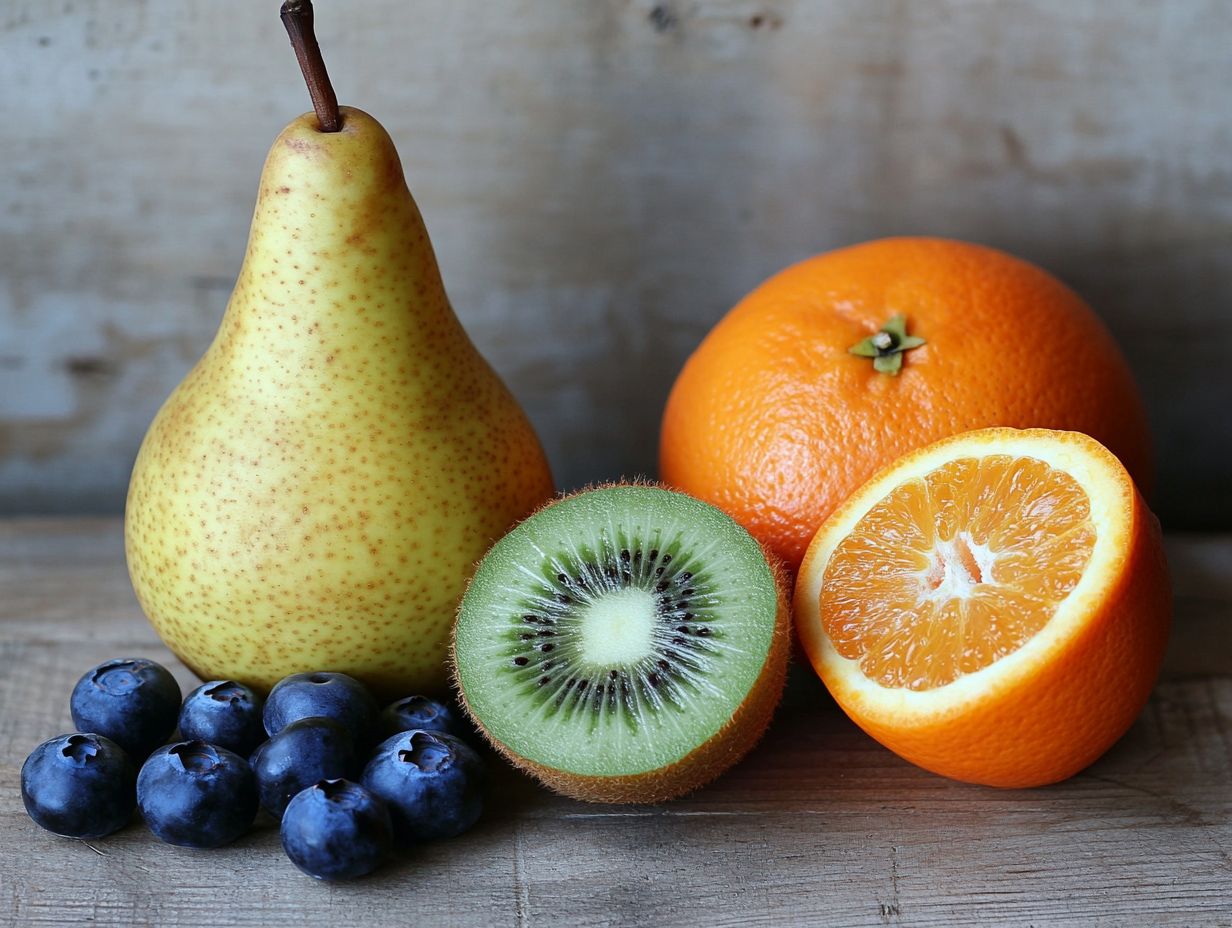
Pears are not just any fruit; they re a juicy delight that can elevate your dietary game. As an excellent source of dietary fiber, they deserve a prominent place in your balanced diet, especially if you’re focused on promoting digestive health and overall well-being.
Consider this: just one medium-sized pear can deliver nearly 20% of your recommended daily fiber intake. This isn’t just a number; it’s vital for your gut health! That fiber works hard for you, aiding in digestion by promoting regular bowel movements and feeding the good bacteria in your gut.
With an array of varieties like Bartlett, Anjou, and Bosc, pears bring an exciting mix of flavors and textures to your culinary repertoire. For a nutritious twist, think about adding sliced pears to your salads, blending them into smoothies, or roasting them as a sweet side dish. This way, you can enjoy their health benefits in versatile and delectable forms.
5. Apples
Apples, often called nature s perfect snack, not only delight your palate with their sweet and satisfying flavors but also pack a generous amount of fiber. This makes them an exceptional choice for maintaining digestive health and embracing a fiber-rich diet.
You ll find a multitude of apple varieties, each boasting its own distinct flavors and fiber content. Take Granny Smith apples, for example; their tartness is complemented by about 4 grams of fiber per medium-sized fruit.
On the sweeter side, Gala apples provide around 3 grams, making your choices both delicious and nutritious. Incorporating apples into your daily meals can be incredibly advantageous.
Their low-calorie count, combined with high fiber content, aids in weight management by promoting a feeling of fullness. Plus, the antioxidants in apples play a vital role in supporting heart health by helping to lower cholesterol levels.
Here are some fun ways to enjoy apples:
- Add sliced apples to your salads for a crunchy twist.
- Blend them into smoothies for a refreshing boost.
- Bake them for a warm, comforting treat.
This way, you can savor the deliciousness while reaping the myriad health benefits apples have to offer.
What Is Fiber and Why Is It Important?
Fiber is an essential part of your healthy diet, falling into two main types soluble and insoluble that play critical roles in promoting digestive health, regulating blood sugar levels, and assisting with weight management. It’s vital for your overall well-being and vitality.
Soluble fiber dissolves in water and helps lower cholesterol. Insoluble fiber does not dissolve; it helps move food through your digestive system. Both types significantly contribute to gut health, supporting the growth of beneficial bacteria and preventing constipation.
To meet dietary guidelines, aim for a minimum of 25 grams of fiber per day as an adult. Experts emphasize fiber’s importance in reducing the risk of chronic diseases like diabetes, cardiovascular disorders, and obesity. By incorporating a variety of fiber-rich foods into your diet, you can enhance your health and well-being.
How Much Fiber Should One Consume in a Day?
Nutrition experts suggest that you aim for approximately 25 to 30 grams of dietary fiber each day, tailored to your unique health needs and dietary preferences. This approach maximizes the benefits of fiber and supports your overall health.
It’s essential to recognize that your fiber requirements can vary based on factors like age, gender, and physical activity level. For example, if you’re a younger adult engaged in high levels of physical activity, you might need a higher intake to meet your body’s demands. On the flip side, older adults often benefit from fiber that aids in digestive health and helps prevent common ailments.
To keep track of your fiber intake accurately, consider using apps or maintaining a food diary that highlights various fiber-rich options. These include:
- Fruits
- Vegetables
- Whole grains
- Nuts
- Legumes
By incorporating these foods into your daily meals perhaps starting your day with oatmeal topped with berries or enjoying a hearty lentil soup for lunch you can effortlessly meet your fiber goals while savoring a diverse and satisfying diet.
Don’t miss out on these health benefits!
What Are the Health Benefits of Eating High-Fiber Fruits?
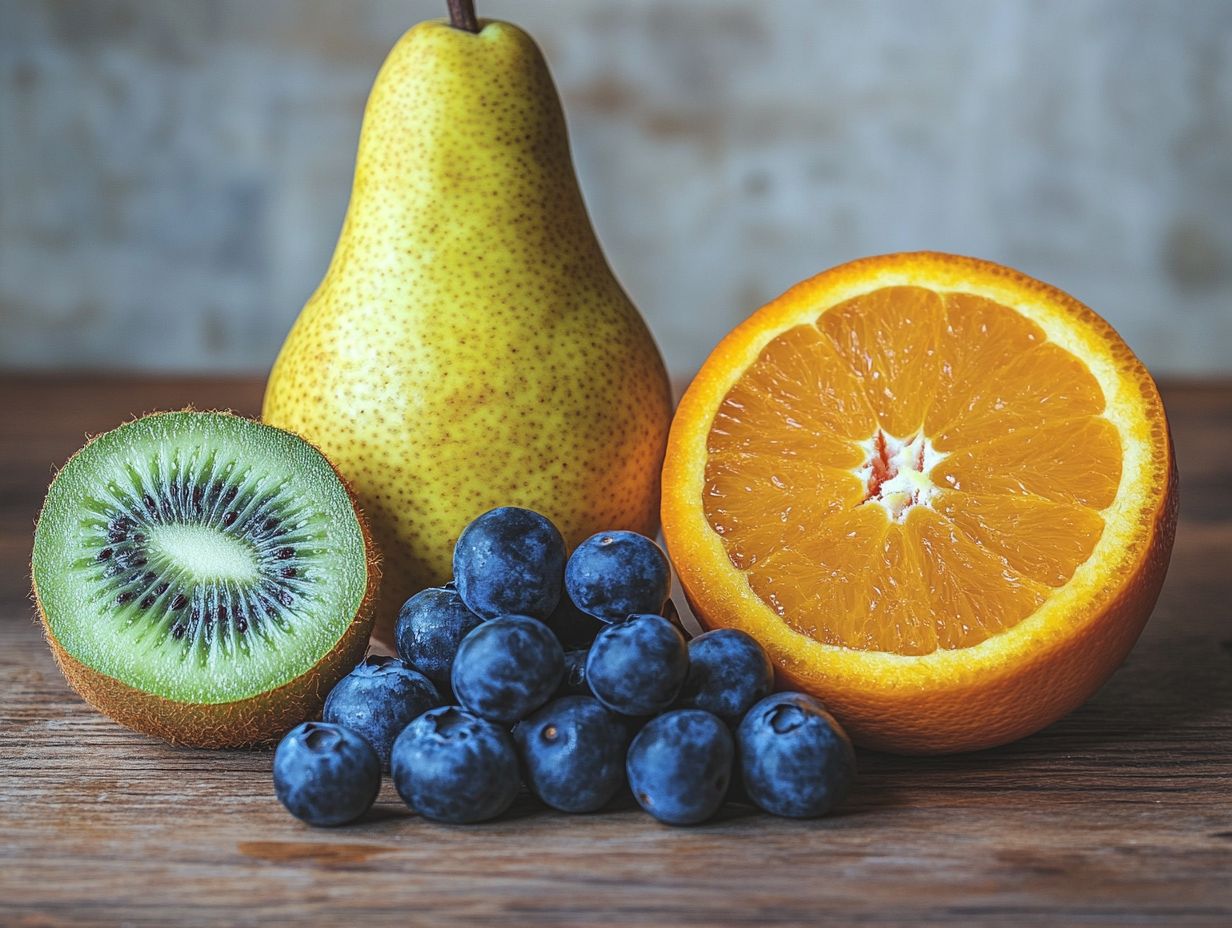
High-fiber fruits provide many health benefits. They improve digestion, help manage weight, and support heart health. All of these factors contribute to a balanced and nutritious diet.
Research indicates that fruits packed with fiber like pears, apples, and berries can help lower cholesterol and stabilize blood sugar levels. They also give a satisfying sense of fullness, making them ideal for anyone aiming to manage their weight.
A study featured in the Journal of Nutrition highlights that a fiber-rich diet can significantly reduce the risk of heart disease.
Start adding high-fiber fruits to your meals today! It’s simple and delicious. Picture this: sliced bananas in your morning oatmeal, blended mixed berries in a refreshing smoothie, or a crisp apple as a delightful afternoon snack.
By making these fruits a staple in your diet, you can effortlessly elevate your overall health.
What Are Some Other High-Fiber Fruits to Consider?
Beyond the fan favorites like avocados and raspberries, there s a treasure trove of high-fiber fruits to explore. Think pomegranates, bananas, and tropical delights that can elevate your fiber intake significantly.
These fruits add variety to your meals and are also packed with essential nutrients. For instance, pomegranates offer about 5 grams of fiber per cup and are loaded with antioxidants that support heart health. Bananas provide around 3 grams of fiber each, making them an excellent choice for a quick energy boost perfect for those pre-workout moments. Tropical fruits like mangoes and kiwi deliver about 5 grams of fiber per cup and are bursting with vitamins.
To creatively incorporate these fruits into your meals, consider:
- Adding them to smoothies for a refreshing blend
- Mixing them into yogurt for a nutritious snack
- Tossing them into salads for a delightful sweet crunch
They also shine in salsas or as toppings for oatmeal, enhancing both flavor and nutrition. Embrace the diversity of these fruits and watch your diet flourish.
How Can One Incorporate High-Fiber Fruits into Their Diet?
Incorporating high-fiber fruits into your diet can be enjoyable and effortless. There are many strategies to help you meet your daily fiber needs while indulging in delicious and nutritious options.
One straightforward approach is to kickstart your day with a vibrant smoothie. Blend together seasonal fruits like ripe bananas, juicy berries, or refreshing mangoes. This not only serves as a quick breakfast but also delivers a substantial fiber boost.
Another clever tip is to elevate your salads by adding sliced apples, mandarin segments, or pomegranate seeds. This enhances both flavor and texture.
For snacks, keep fresh fruits like oranges or convenient apple slices within reach, making healthy choices the easiest ones to grab.
By experimenting with various seasonal fruits, you can transform your meals, amplifying taste while ensuring your diet remains exciting and nourishing.
What Are Some Delicious Recipes Using High-Fiber Fruits?
Exploring delicious recipes with high-fiber fruits can elevate your meals into vibrant, nutritious experiences. These recipes offer delightful flavors and significant health benefits. Imagine infusing your dishes with the richness of avocados, the sweetness of berries, and the crispiness of apples each component not only tantalizes your taste buds but also nourishes your body.
Consider preparing these fruits in innovative ways: grilling, baking, or blending can amplify their nutritional value while making them more enjoyable. By incorporating herbs, spices, and colorful garnishes, you can transform ordinary plates into stunning culinary masterpieces.
Take, for example, a vibrant berry compote drizzled over Greek yogurt. This versatile creation functions beautifully as both a healthy breakfast and an enticing dessert. It s a perfect illustration of how a sprinkle of creativity in the kitchen leads to delightful, high-fiber meals that are as pleasing to the eye as they are to the palate.
Frequently Asked Questions
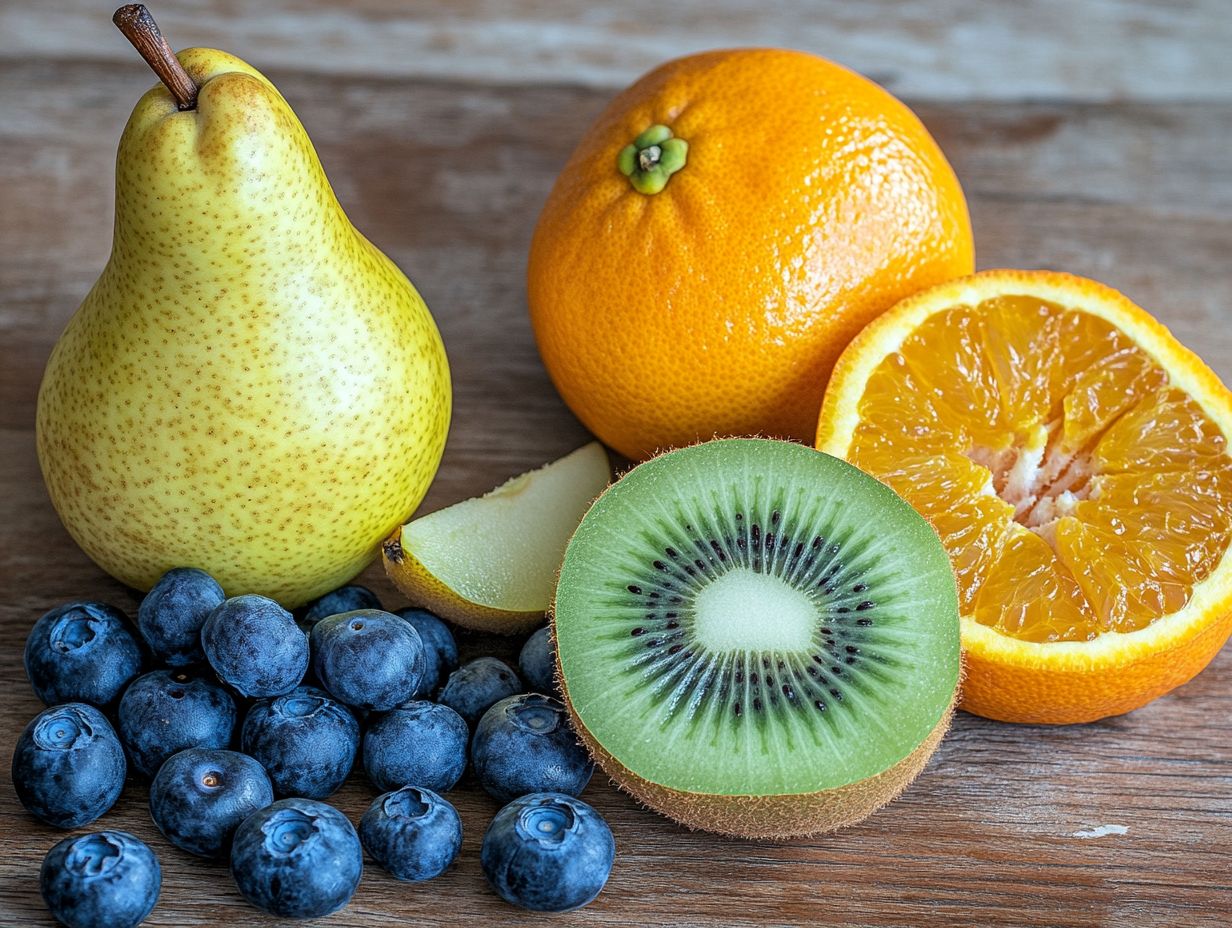
What are the benefits of eating 5 fruits high in fiber?
Eating 5 fruits high in fiber offers many health benefits. These include improved digestion, weight management, lower cholesterol, and a reduced risk of diseases like heart disease and diabetes.
Which fruits are considered high in fiber?
Fruits like apples, bananas, pears, raspberries, and avocados are high in fiber. These fruits are both tasty and beneficial for your health.
How much fiber do these fruits contain?
The fiber content varies by fruit. For example, apples have about 4 grams, bananas have 3 grams, pears have 5 grams, raspberries have 8 grams, and avocados have 10 grams of fiber.
How can I incorporate these fruits into my diet?
You can easily add these fruits to your meals and snacks. Try putting berries in your oatmeal or yogurt, having a banana with breakfast, or enjoying an apple with almond butter.
Can I still eat these fruits if I am trying to lose weight?
Yes! These fruits can actually support your weight loss efforts. They are low in calories and high in fiber, helping you feel full and satisfied.
Are there any other sources of fiber I should include in my diet?
Absolutely! Besides these 5 fruits, include high-fiber foods like vegetables, whole grains, beans, and nuts. This will boost your fiber intake and enhance your health.
